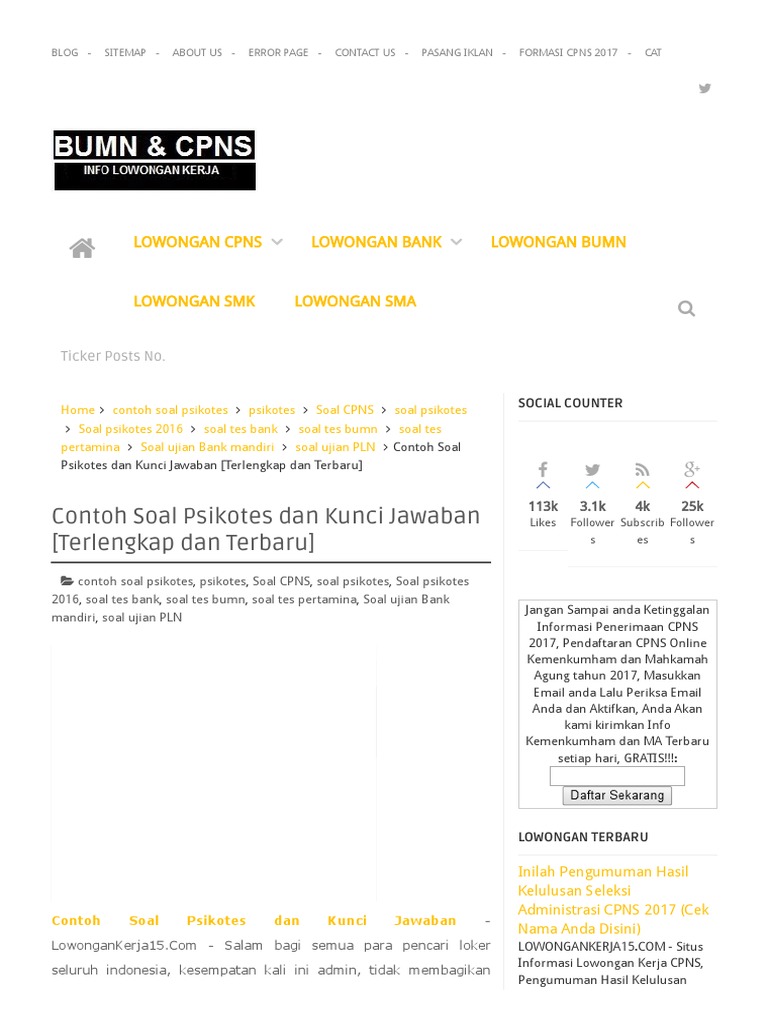Mar 27, 2018 Kumpulan soal-soal psikotes dan latihan psikotes secara online yang dapat kamu kerjakan sebagai persiapan dalam menghadapi ujian psikotes kerja. File tersebut dapat kamu download dengan gratis. Download kumpulan soal psikotes dan jawabannya pdf gratis. 
The Culture Fair Intelligence Test (CFIT) was conceived by Raymond B. Cattell in 1920s. It is a nonverbal instrument to measure your analytical and reasoning ability in the abstract and novel situations. The test includes mazes, classifications, conditions and series. Such problems are believed to be common with all cultures. That’s the reason that the testing industry claims it free from all cultural influences. Please let me know if you are interested to purchase CFIT.
Looking for customized in-house training sessions that fit your needs, particularly in the Philippines? Please send me an email at clarencegapostol@gmail.com or WhatsApp +24. When your request is received I will follow up with you as soon as possible.Thank you!


Culture Fair Intelligence Test (CFIT) Manual • 1. Culture Fair Intelligence Tests (CFIT) by Raymond B. Cattell Slides created by Clarence G. Apostol MA in Counseling Psychology De La Salle University-Manila CPS 560M: Assessment Tools in Counseling • Introduction Raymond B. Cattell divided general intelligence into two distinct types: crystallized and fluid. Crystallized intelligence represents knowledge acquired through experience.
Tests of crystallized intelligence, such as verbal memory and general knowledge, are thought to reflect the influence of culture and schooling. Fluid intelligence represents the biological ability to acquire knowledge and solve problems. Tests that reflect fluid intelligence, such as reasoning speed, spatial reasoning, and inductive reasoning, are thought to reflect intelligence independent of learning. Cattell developed a “culture-fair” test to measure fluid intelligence. • Purpose: The Culture Fair Intelligence Tests measures individual intelligence in a manner designed to reduced, as much as possible, the influence of verbal fluency, cultural climate, and educational level. The tests, which may be administered individually or in a group, are non-verbal and require only the examinees be able to perceive relationships in shapes and figures. Each scale contains 4 subtests involving different perceptual tasks, so that the composite intelligence measure avoids spurious reliance on a single skill.
• Purpose: It aids in the identification of learning problems and helps in making more reliable and informed decisions in relation to the special education needs of children. Other uses include selecting students for accelerated educational programs, advising students as to probable success in college, and increasing effectiveness of vocational guidance decisions, for both students and adults. • History late 1920’s-Began in the work undertaken by Cattell, sparked the precise scientific research of Charles Spearman into the nature and accurate measurement of intelligence. 1930-resulted in the publication of the Cattell Group and Inventory (particularly intended for use with children) were revised and recast into non-verbal form to diminish the unwanted and unnecessary effects of verbal fluency in the pure measurement of intelligence • History 1940-another revision of the test appeared. Items had become completely perceptual and were organized into 6 subtest, 3 of which have been retained in the present format. Of the 159 items analyzes, 72 of satisfactory validity and reliability were retained for the published edition 1949-another revision and adopted the format consisting of 4 subtest (Series, Classification, Matrices and Conditions) 1961-primary outcome of this revision were slight adjustments in the difficulty level and sequencing of few items. Fallout 1 save file.